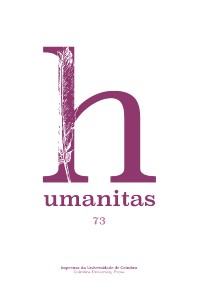Please use this identifier to cite or link to this item:
https://hdl.handle.net/10316.2/46537| Title: | La imagen estereotipada del sacrificio del buey en la cultura visual greco-romana | Other Titles: | The stereotyped image of the sacrifice of the ox in Greco-Roman visual culture | Authors: | Tomás García, Jorge | Keywords: | Sacrificio del buey;Pausias;immolatio boum;pervivencia iconografía clásica;Renacimiento;estética;Sacrifice of ox;Pausias;immolatio boum;survival classic iconography;Renaissance;aesthetics | Issue Date: | 2019 | Publisher: | Imprensa da Universidade de Coimbra | Abstract: | El presente trabajo tiene como objetivo analizar en profundidad la iconografía
de la immolatio boum en la cultura visual romana de época tardo-republicana y
a inicios del principado. Para ello nos serviremos de la presencia de una pintura
griega en particular, la immolatio boum de Pausias de Sición (pintor griego del siglo
IV a.C.) que fue expuesta en el Pórtico de Pompeyo. A partir de esta certeza –bien
documentada en fuentes literarias- estudiaremos cómo las novedades formales,
estilísticas y visuales introducidas por la vanguardia pictórica de Pausias tuvieron
repercusión en la visualización del espectador romano. La principal novedad de este
trabajo reside en analizar la intersignificación de la pintura griega en un espacio
público romano en el que adquirió unos matices interpretativos que fueron diseñados
y construidos por la cultura política y religiosa romana. Los testimonios literarios de Plinio el Viejo, Horacio, Pausanias o Ateneo nos ofrecen la suficiente información
cómo para reconstruir el impacto visual de la obra en el contexto romano. Además
de estas fuentes escritas, la metodología de análisis de las imágenes está construida a
partir de una amplia gama de ejemplos coetáneos a la época de Augusto. Finalmente,
el trabajo pretende mostrar cómo esta iconografía tan característica pervivió a través
de los siglos mediante distintos canales de transmisión visual hasta estar presente
en la obra de Rafel Sanzio o Pedro Pablo Rubens. The aim of this article is to analyze the iconography of the immolatio boum in the Roman visual culture of the late-republican period and at the beginning of the principality. For this we will use the presence of a Greek painting in particular, the immolatio boum of Pausias of Sicyon (Greek painter of the 4th century BC) that was exhibited in the Pompey portico. This certainty is well documented in literary sources, and we will study how the formal, stylistic and visual novelties introduced by the Pausias pictorial avant-garde had an impact on the visualization of the Roman viewer. The main novelty of this article lies in analyzing the intersignification of Greek painting in a Roman public space in which it acquired interpretative nuances that were designed by the Roman political and religious culture. The literary testimonies of Pliny the Elder, Horace, Pausanias or Athenaeus offer us enough information to reconstruct the visual impact of the work in the Roman context. In addition to these written sources, the methodology of image analysis is constructed from a wide range of contemporary examples from the time of Augustus. Finally, the article aims to show how this characteristic iconography survived through different channels of visual transmission to be present in the work of Rafel Sanzio or Pedro Pablo Rubens. |
URI: | https://hdl.handle.net/10316.2/46537 | ISSN: | 0871-1569 2183-1718 (PDF) |
DOI: | 10.14195/2183-1718_73_4 | Rights: | open access |
| Appears in Collections: | HVMANITAS |
Files in This Item:
| File | Description | Size | Format | |
|---|---|---|---|---|
| la_imagen_estereotipada_del_sacrificio_del_buey.pdf | 2.01 MB | Adobe PDF |  |
Items in DSpace are protected by copyright, with all rights reserved, unless otherwise indicated.
